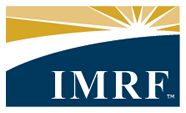Follow-up meetings to address the impact of Investment Returns on Employer Reserves, Employer Funding Status, and Employer Contribution Rates
May 10, 2002
IMRF MEETINGS
IMRF held a series of meetings in January and February addressing the impact of 2001 investment returns on employer reserves, employer funding status, and employer contribution rates in 2003.
IMRF presented those meetings as step one in a three step process. Step two will be your receipt of GASB 27 Footnote Disclosures, 2001 Employer Reserve Statements, and 2003 Preliminary Rate Notices. These follow-up meetings should be seen as step three.
Due to the significance of the potential impact on individual employers, IMRF has scheduled a series of hour-and-a-half meetings throughout the state to answer any specific questions you might have. Refer to the last page of this memo for the schedule of meetings.
OVERVIEW
As a defined benefit plan, these returns have no impact on the benefits for either active or retired IMRF members. All member benefits are guaranteed. However, these returns will impact individual employer reserve balances, individual employer funding status, and future individual employer contribution rates. We encourage each Authorized Agent to share this memorandum with your unit of government’s chief financial officer, other officials, and governing board members who may be interested in pension costs.
Impact of previous investment returns on employer rates
For 1995 through 1999, IMRF investments earned 20.68%, 15.87%, 16.19%, 12.63% and 20.93% respectively. After posting interest to member, annuitant and employer reserves, the earnings and experience reserve was funded. Earnings exceeding reserve requirements were distributed back to the employer reserve as residual income. For 1995 through 1999, employer reserves received a total return (residual income and interest) of 70.05%, 38.62%, 27.94%, 22.29% and 23.01%. These returns dramatically increased employer reserve balances, improved employers’ funded status, and helped to reduce employer contribution rates. The average Regular employer rate dropped from 10.19% in 1995 to 5.87% in 2002. Rates for the SLEP and ECO plans were positively impacted, but less dramatically. In contrast, the investment return for 2000 was 1.87%, or 5.63% less than the assumed actuarial return on investments of 7.5%.
2001 INVESTMENT RETURNS AND IMPACT ON EMPLOYERS
IMRF’s 2001 investment return was negative 6.08%. This resulted in a loss of $1,098 billion. The impact of this loss on employers was:
Employer Reserves
There was an 8.173% interest charge to each individual employer reserve. In other words, all opening-year employer reserve balances were reduced 8.173%. The employer reserve statements that will be mailed in June 2002 will show the impact of this charge.
Employer Funding Status
At the beginning of 2001, IMRF, as a whole, was 107.2% funded. Individual employers’ funded status varied widely from this amount. As of January 1, 2002, IMRF’s funded status as a whole was 106.4%. While other factors impact funding status, such as the growth in actuarial liabilities, most employers will see a drop in their individual funded status. On a market value basis, overall funding is 97.7%.
Employer Contribution Rates
In order to minimize fluctuations in contribution rates, the actuary uses an average of the last five years of investment returns when calculating rates. The 2003 employer contribution rate is the first rate to reflect both the 2000 and 2001 returns.
The average employer contribution rate for 2003 is 6.22%. This is an increase of approximately 6%. The impact may be more dramatic for individual employers.
QUESTIONS
If you have any questions regarding your employer rate or funded status, please call 1-800-ASK-IMRF (1-800-275-4673) and ask for IMRF Finance Operations Manager Phyllis Walker.

